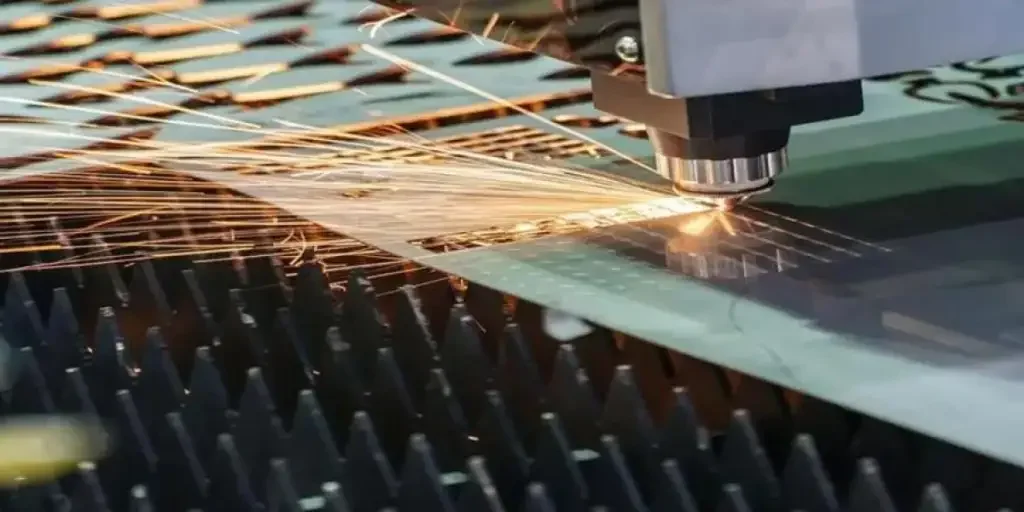The widespread significance of cutting operations as a critical process in multiple sectors has increased the demand for advanced cutting equipment and technologies, including laser and plasma cutters. The use of high-powered, computer-operated lasers in laser cutting facilitates automation of cutting processes, increasing their popularity among manufacturers looking to produce high-quality and precise cut parts. Plasma cutters, on the other hand, are more effective in cutting thick material, making them more appealing to manufacturers handling heavy equipment.
Table of Contents
Plasma and laser cutting machines business potential
Tips for selecting plasma and laser cutting machines to sell
Choosing the best plasma and laser cutters for end customers
Final thoughts
Plasma and laser cutting machines business potential
The increased sales and production in various industries, including automotive, defense, and consumer electronics, have significantly increased the demand for laser cutting machines. Consequently, the market value was projected to grow at a CAGR of 9.3% between 2016 and 2022 to reach US$ 5.7 billion by the end of this projection period. The need for automation and the introduction of new technologies have significantly influenced this growth.
The global market for plasma cutting equipment is expected to grow at a CAGR of 4.0% between 2017 and 2026. This moderate growth rate will increase the global sales of plasma cutting machines to US$ 795 million by the end of the projection period, an increase from the US$ 280 million sold in 2017.
Tips for selecting plasma and laser cutting machines to sell
Key differences between laser and plasma cutting machines
The use of plasma cutting machines began in the 1950s, way before the laser cutters were developed in the mid-1960s. These cutters offer an alternative cutting process characterized by the use of a plasma torch that creates a hot mixture of gases, including nitrogen and hydrogen, capable of cutting even the toughest materials like aluminum and copper.
On the contrary, laser cutters are characterized by a cutting process that uses amplified laser light. It allows extreme precision when cutting materials due to the use of computers that enable focusing laser light on small points with the help of optics.
Plasma cutting machines use electrically conductive gas to make the cuts instead of a beam of optic light. Consequently, these cutters can only be used to cut metals that conduct electricity. In contrast, laser cutters can be used to cut other materials, including wood, glass, and plastics. It is important to note that while laser cutting may work with all types of woods as long as it is within the recommended thickness, not all types of plastics are ideal for laser cutting. Those that burn or melt render the process ineffective.
Plasma cutters are exclusively used to cut different types of metals, such as aluminum and stainless steel. These involve metals with reflective surfaces that cannot be manipulated with laser cutters. Unlike plasma cutting machines, laser cutters can be used for other purposes, including engraving, scribing, trimming, and welding.
Plasma cutters are used to cut thick sheets of metal with a thickness of up to 1.5 inches, while laser cutters are more useful with thinner or more intricate metal sheets, such as 0.5 inches thick aluminum.
While plasma cutters are appropriate for simple cuts, laser cutters provide a certain level of detail that makes them more appropriate for cutting out small shapes from the metals or engraving details.
Laser vs. plasma: the benefits
| Benefits of laser cutting | Benefits of plasma cutting |
| High precision is characterized by 0.05mm positioning accuracy or 0.02mm repositioning accuracyVariety of uses with multiple materials and thicknessesLow maintenance and maximum efficiencyHigh tolerance, thus reducing metal distortionFast cutting speed of up to 10m/min for thin sheetsUsing high-powered computers to guide the laser cutting process enables the creation of intricate designs | More versatility since they are effective for cutting diverse thick metals and multiple surface typesSmaller kerf, resulting in minimal metal lossHigh-quality finish and part replicationLower lead times Lower daily operation costsLess expensive to buy |
Choosing the best plasma and laser cutters for end customers
Target market for plasma cutters
North America offers the most lucrative marketplace for plasma cutting machines due to the increased growth of heavy metal industries facilitated by changes in trade policies and favorable industrial regulations. The buyers that are most likely to use plasma cutters are those in heavy manufacturing industries where thick metals need to be cut. These industries include automotive, aerospace and defense, electrical equipment, industrial machinery, medical devices, and robotics.
Target market for laser cutters
The robust industrial sector in North America is expected to contribute to the massive growth of laser cutting machines. Fast-growing economies such as China, India, and Japan are expected to increase the market for laser cutters in the Asia Pacific. The main customers are those in smaller industries that use thin metal sheets. The automotive industry is an example of such industries.
Final thoughts
The cutting material, power, and speed desired during the cutting process should determine the type of plasma or laser cutters selected. Check Alibaba.com for more information on laser and plasma cutting machines.




